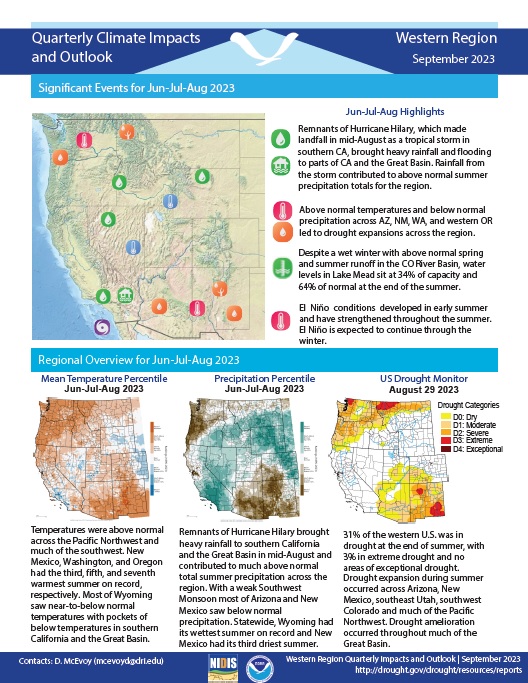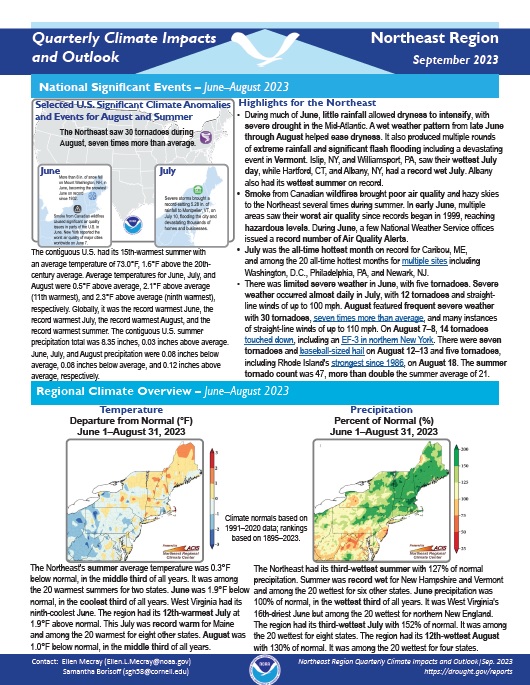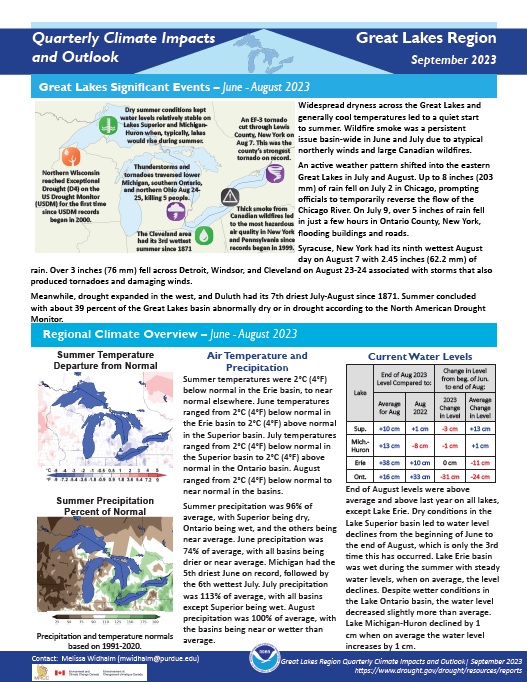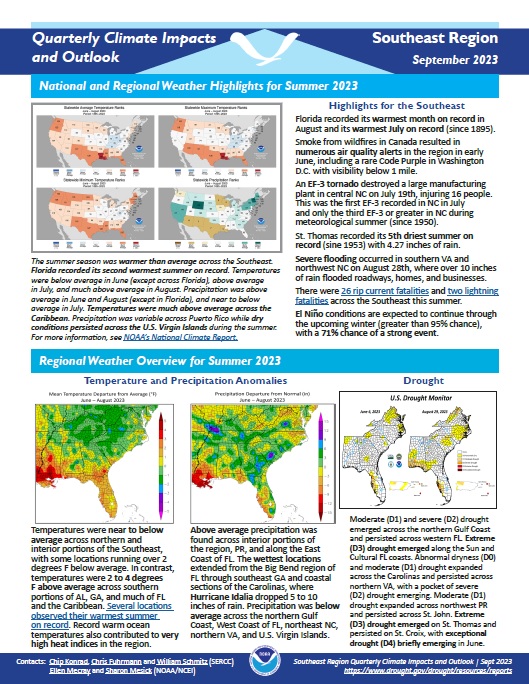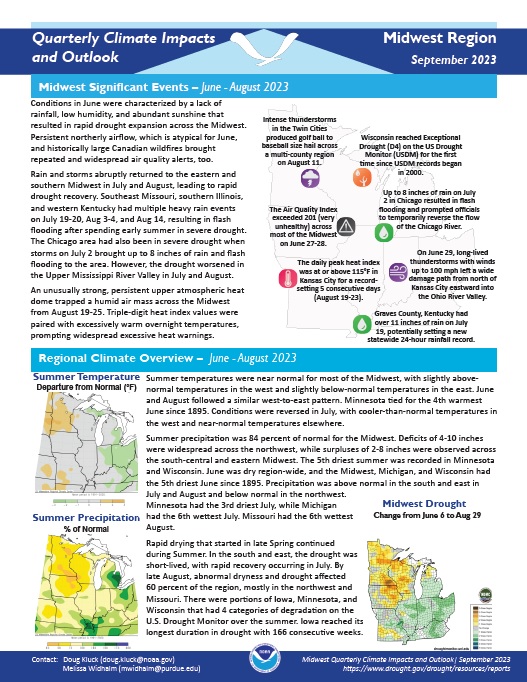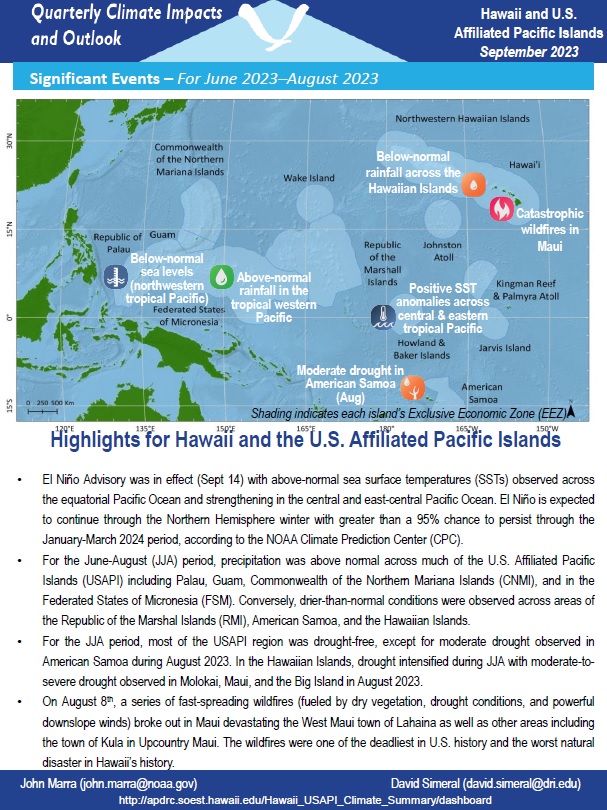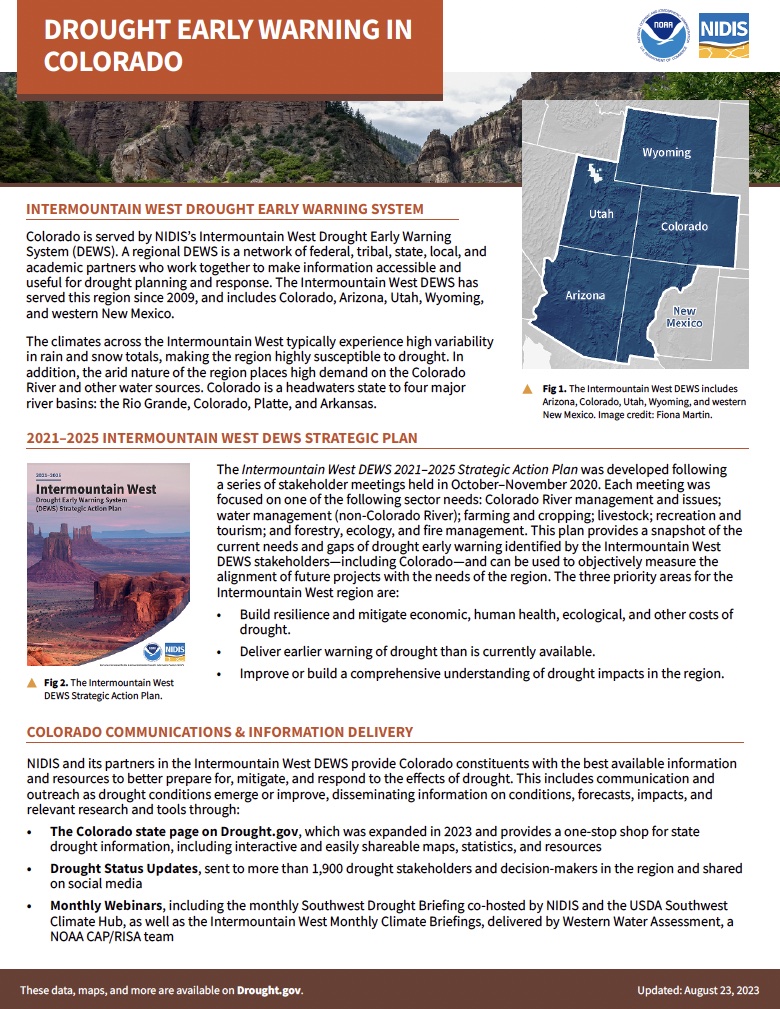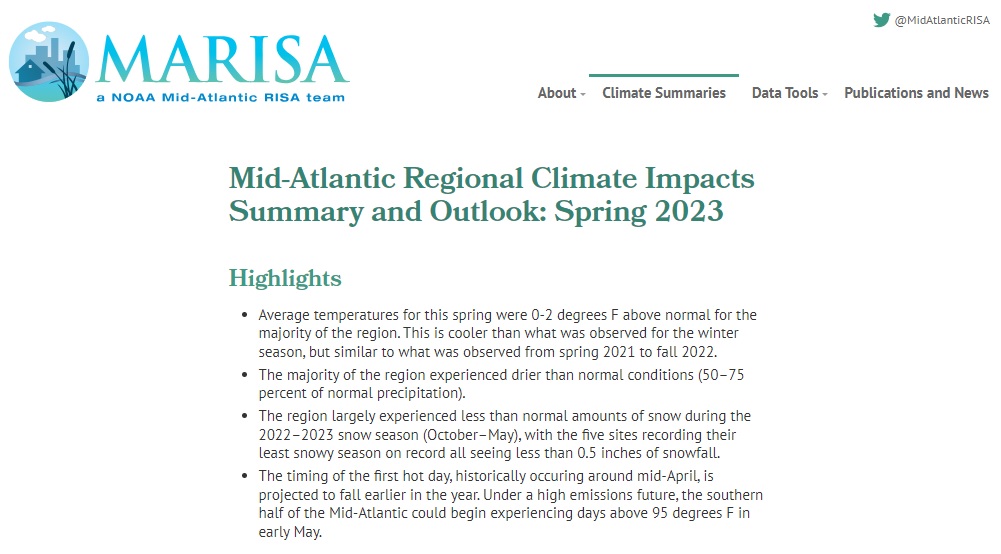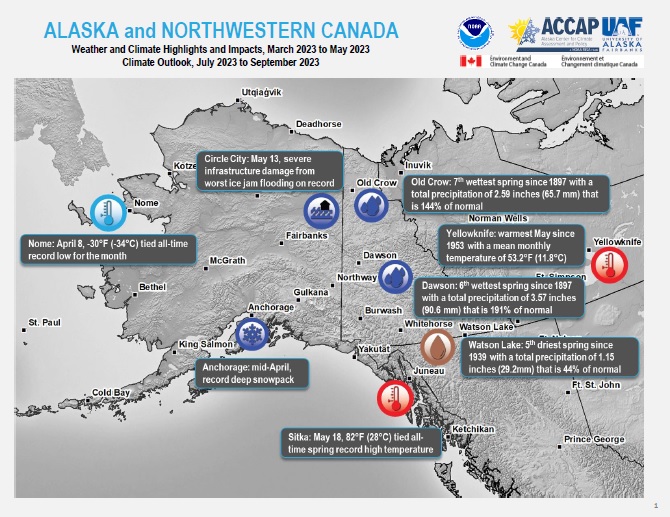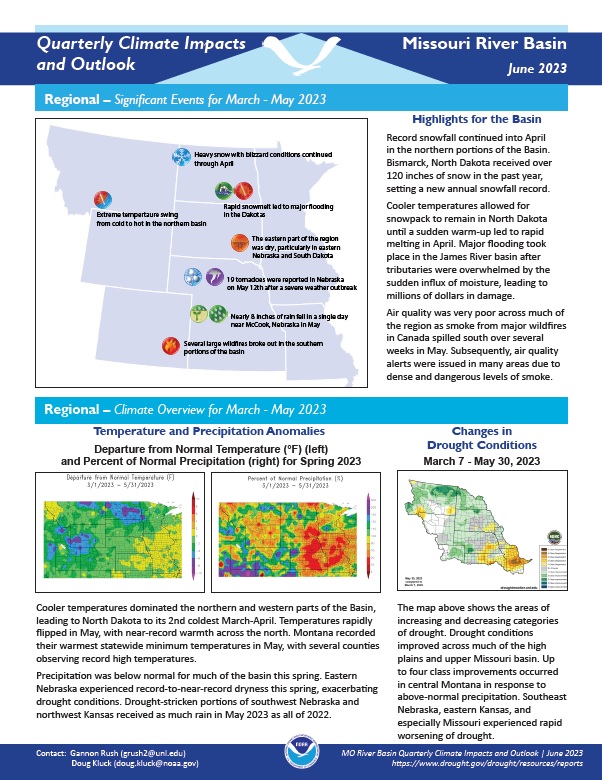For the latest forecasts and critical weather information, visit weather.gov.
Quarterly Climate Impacts and Outlook for the Western Region for June–August 2023. Dated September 2023.
Temperatures were above normal across the Pacific Northwest and much of the Southwest. New Mexico, Washington, and Oregon had their third, fifth, and seventh warmest summer on record, respectively. Remnants of Hurricane Hilary brought heavy rainfall to southern California and the Great Basin in mid-August and contributed to much-above-normal total summer precipitation across the region.
Quarterly Climate Impacts and Outlook for the Northeast Region for June–August 2023. Dated September 2023.
The Northeast's summer average temperature was 0.3°F below normal, in the middle third of all years. It was among the 20 warmest summers for two states. The Northeast had its third-wettest summer with 127% of normal precipitation. Summer was record wet for New Hampshire and Vermont and among the 20 wettest for six other states.
Quarterly Climate Impacts and Outlook for the Great Lakes Region for June–August 2023. Dated September 2023.
Summer temperatures were 2°C (4°F) below normal in the Erie basin, to near normal elsewhere. Summer precipitation was 96% of average, with Superior dry, Ontario wet, and the others near average.
Quarterly Climate Impacts and Outlook for the Southeast Region for June–August 2023. Dated September 2023.
Quarterly Climate Impacts and Outlook for the Midwest Region for June–August 2023. Dated September 2023.
Summer temperatures were near normal for most of the Midwest, with slightly above-normal temperatures in the west and slightly below-normal temperatures in the east. Summer precipitation was 84% of normal for the Midwest. Deficits of 4–10 inches were widespread across the northwest, while surpluses of 2–8 inches were observed across the south-central and eastern Midwest.
Quarterly Climate Impacts and Outlook for the Pacific Region for June–August 2023. Dated September 2023.
For the June–August period, precipitation was above normal across much of the U.S.-Affiliated Pacific Islands, including Palau, Guam, Commonwealth of the Northern Mariana Islands, and in the Federated States of Micronesia. Conversely, drier-than-normal conditions were observed across areas of the Republic of the Marshall Islands, American Samoa, and the Hawaiian Islands.
Colorado is served by NIDIS's Intermountain West Drought Early Warning System (DEWS). A regional DEWS is a network of federal, tribal, state, local, and academic partners who work together to make information accessible and useful for drought planning and response. The Intermountain West DEWS has served this region since 2009, and includes Colorado, Arizona, Utah, Wyoming, and western New Mexico.
Quarterly Climate Impacts and Outlook for the Mid-Atlantic Region for March–May 2023. Dated June 2023.
Average temperatures for this spring were 0–2 degrees F above normal for the majority of the region. This is cooler than what was observed for the winter season, but similar to what was observed from spring 2021 to fall 2022. The majority of the region experienced drier than normal conditions (50%–75% of normal precipitation).
Quarterly Climate Impacts and Outlook for Alaska and Northwestern Canada for March–May 2023, with an outlook for July–September 2023. Dated June 2023.
NOAA’s Regional Climate Services Program and partners created these climate outlooks to inform the public about recent climate impacts within their respective regions. Each regional report contains easy-to-understand language, and anyone can access them through the Drought Portal.
Quarterly Climate Impacts and Outlook for the Missouri River Basin for March–May 2023. Dated June 2023.
Cooler temperatures dominated the northern and western parts of the Basin, leading North Dakota to its 2nd coldest March–April. Temperatures rapidly flipped in May, with near-record warmth across the north. Precipitation was below normal for much of the basin this spring. Eastern Nebraska experienced record to near-record dryness this spring, exacerbating drought conditions.


